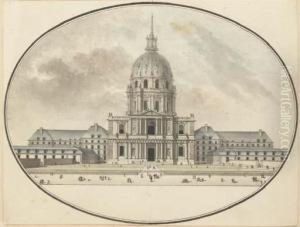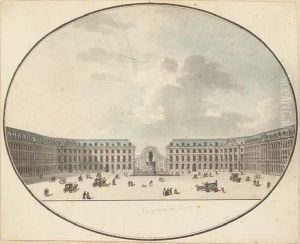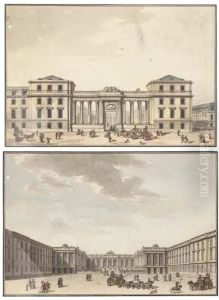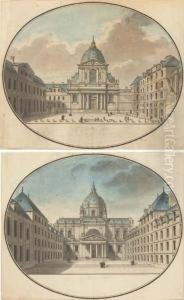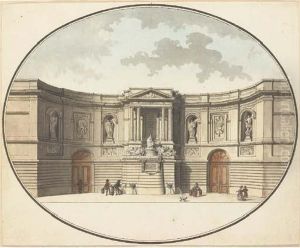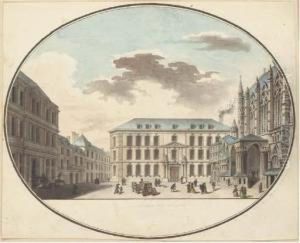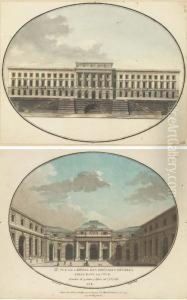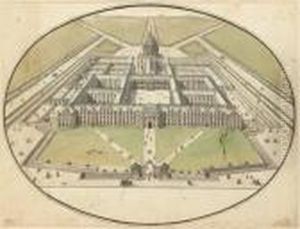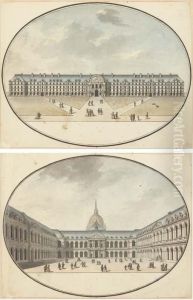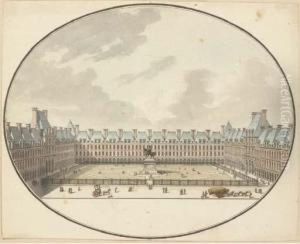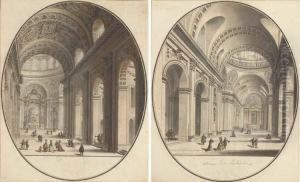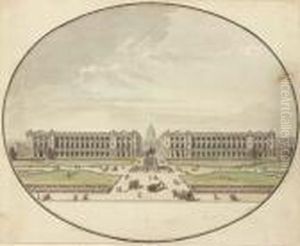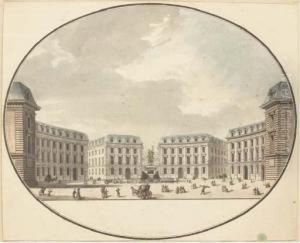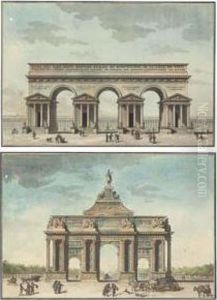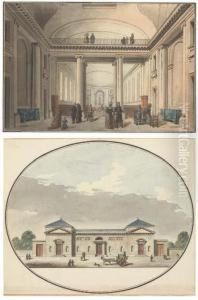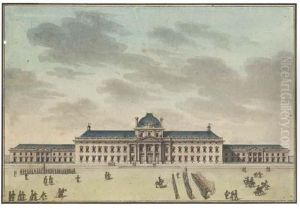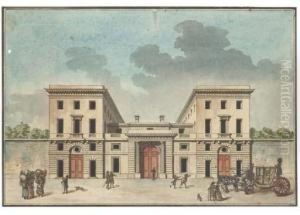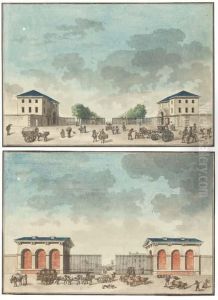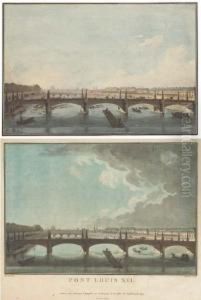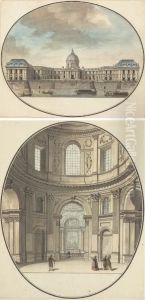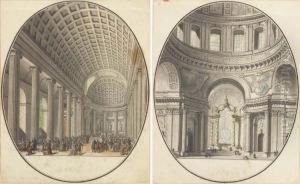Jean Nicolas Louis Durand Paintings
Jean-Nicolas-Louis Durand was a French architect and educator, born on September 18, 1760, in Paris, France. He is particularly noted for his role in the development of architectural teaching methods and for his rationalist approach to architectural design.
Durand was trained under the prominent French architect Étienne-Louis Boullée and later became a member of the French Revolutionary Government's Corps of Engineers. In 1795, he was appointed as a professor at the newly founded École Polytechnique, where he was influential in the establishment of a teaching method based on clear, rational principles that divorced architectural design from historical styles and ornamentation.
Durand's teachings emphasized the functional aspects of building design and sought to systematize the process of architectural planning. His approach was detailed in his influential book 'Précis des leçons d'architecture données à l'École Polytechnique' (Summary of Architecture Lessons Given at the École Polytechnique), published in 1802-1805. The book laid out a methodical system for designing buildings based on their purpose and the principles of simplicity and economy.
In addition to his educational contributions, Durand was also involved in practical architectural work. Although he is not known for a large number of built projects, his theoretical work greatly influenced the teaching of architecture and the practice of design in the 19th century. His ideas paved the way for the subsequent development of architectural modernism.
Durand's focus on typology and his insistence on the separation of style from function can be seen as a precursor to later architectural movements that emphasized functionalism and the rejection of historical revivalism. He remained a professor at the École Polytechnique until 1830 and continued to have a significant impact on the field of architecture through his students and his publications.
Jean-Nicolas-Louis Durand passed away on December 31, 1834, in Thiais, France. His legacy lives on through his contributions to architectural education and his influence on the rationalist movement in architecture.
